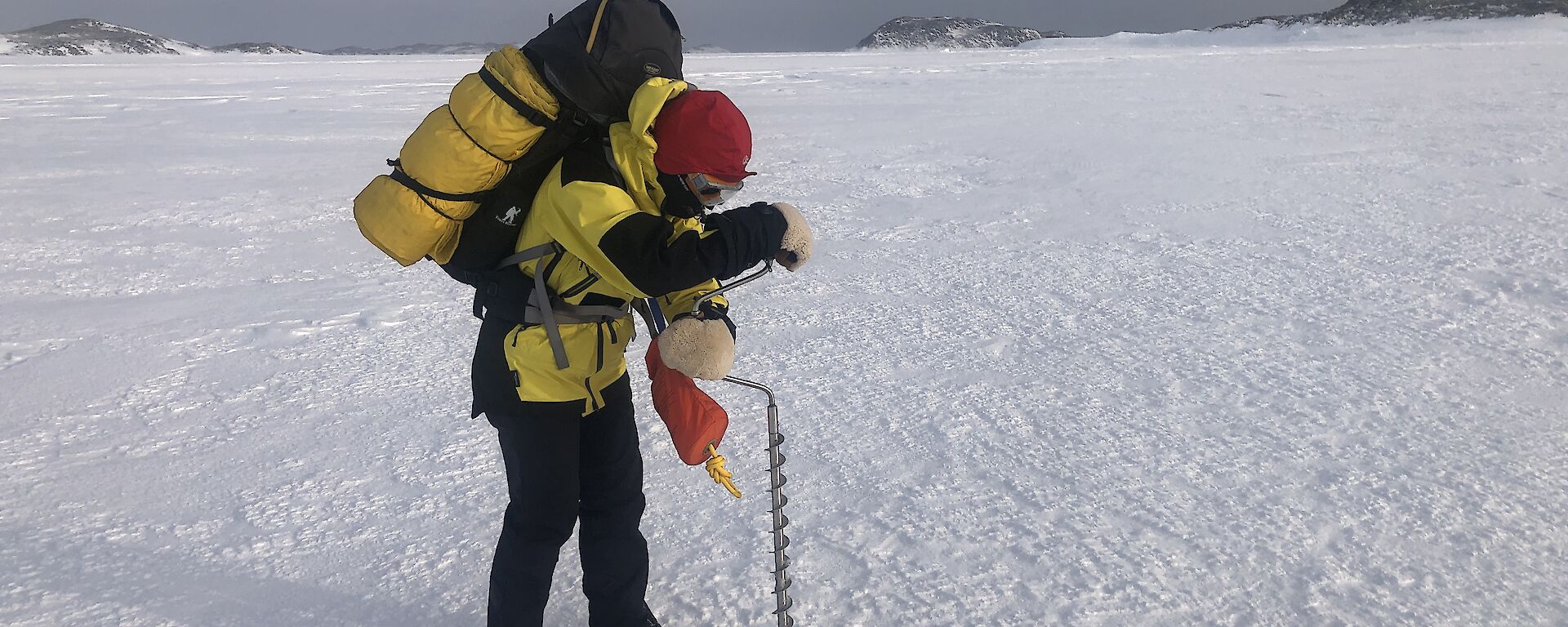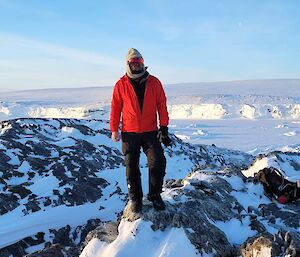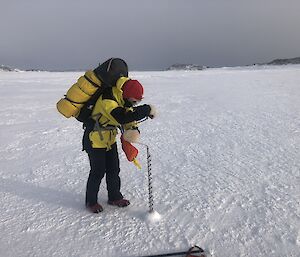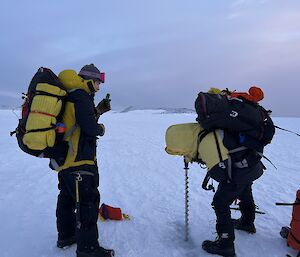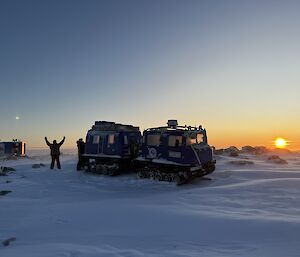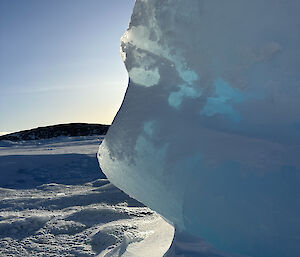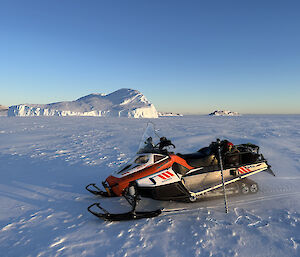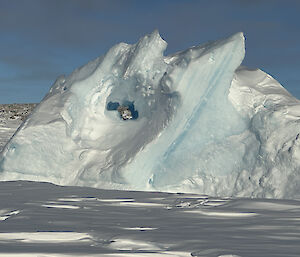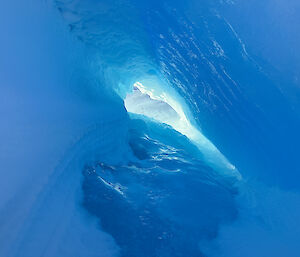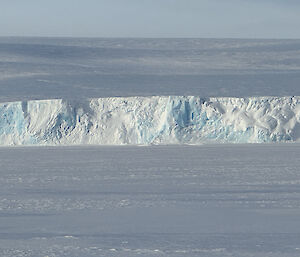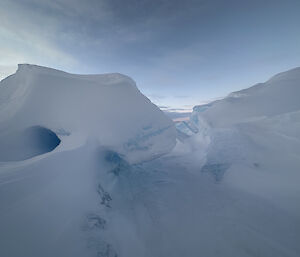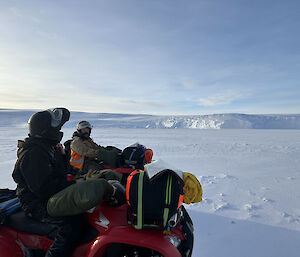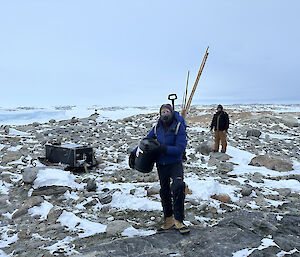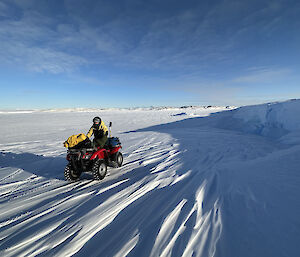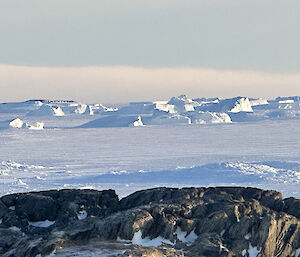The colder and darker depths of winter have not quashed people’s recreational aspirations here at Casey. Shorter, colder days reduce the range and scope of daylight travel times and likely windows of opportunity but many have persisted with overnight hut trips and day walks.
The winter months also introduce the community to the intriguing and beautiful yet mysterious friend – the sea ice. The forming of the sea ice is part of the picture for the seasonal disappearance of wildlife. However, for us humans living on station it revolutionises our travel opportunities. Once it has transitioned through various phases of growth to form a reasonably consistent layer it is tested for thickness and integrity to support foot, ski, bike and light vehicle travel. This testing continues throughout the sea ice season every time a group travels on the ice.
The coastline around Casey consists of reasonably intricate bays and peninsulas and many islands. Travel on sea ice sometimes allows us to travel in straight lines from peninsula to peninsula on a nice flat surface rather than walking or driving (usually over very bumpy, icy sastrugi) the long way around. It also allows access to some of the closer islands. Our sea ice travel is always reasonably close to land utilising the fast ice (ice that is fastened to land as opposed to pack ice etc further out to sea).
Entering and exiting the sea ice involves crossing tide cracks (where the fast ice slowly heaves up and down with tidal fluctuations at its juncture with the land ice). These access points with user friendly ramps develop in consistent locations each season. Routes between these ramps become consistent travel routes. Data from longitudinal studies and experiential learning have provided us with information that allows us to know which bays and passages are likely to be safe travel routes and those that may not. Phenomena such as exposure to swell, proximity to accelerated tidal streams, depth etc can affect the reliability of fast ice.
When competing priorities and favourable weather windows allow we have opportunistically contributed to this sea ice monitoring program. This involves travelling by foot, quad bike or snowmobile to designated waypoints and drilling to determine the depth and quality of ice and noting meteorological measurements such as wind speed and barometric pressure etc.
During the depths of winter it makes sense to achieve some of the unglamorous indoor jobs like stock takes. Now that Spring has sprung and we have longer daylight hours it is time to get back into the field more regularly. Tasks such as re-caning travel routes, re-stocking huts, checking caches, and generally preparing our field recreational and operational areas for the next summer season will be achieved. Maintenance trips will be undertaken to penguin rookery wildlife monitoring cameras on islands and other protected areas before the penguins return.
Six of us with a combination of what we think are appropriate skillsets are preparing to drive 120 km (doesn’t sound far but it is when it’s over a combination of lumpy, bumpy hard pack snow, ice and soft snow) up to an altitude of around 1400M. This is to replace and recalibrate an automatic weather station on Law Dome that has stopped working and for its tripod base and instruments to be raised to accommodate accumulating snow depth. This is an annual task to maintain this key weather station that is very important for forecasting for the aviation program and general operations. We think this will be two travel days and one day working on the project. We have a field training officer, diesel mechanic, communications technician, plumber and two Bureau of Meteorology technicians. Anyway, we’ll report back in a few weeks and let you know if we should have brought someone or something else with us for this job!
Sean Murray
Senior Field Training Officer

